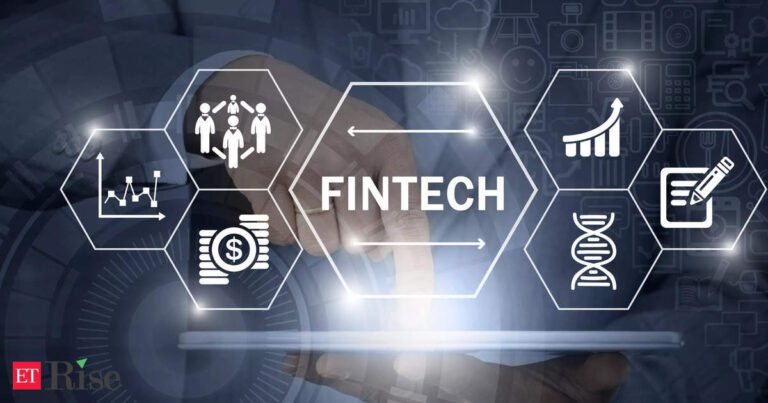Within this cautious landscape, specific segments have gained attention for their resilience and adaptability. However, it is crucial to recognize the broader sense of restraint that prevails in the industry. As we navigate these transitional phases, it is prudent to remain attentive to the nuanced developments shaping the fintech ecosystem.
Revolutionizing transactions: the unstoppable reign of digital payments and UPI Supremacy
UPI transactions reached a new high of Rs 17.4 lakh crore in November 2023, a 54% year-on-year increase in terms of number of transactions and a 46% year-on-year increase in terms of value.
The emergence of digital loans on UPI mirrors the functionality of a credit card, introducing an intriguing dynamic to the financial landscape. The coming years are expected to witness a redefined lending experience as digital lending driven by UPI takes center stage, offering a glimpse into the future of inclusive and accessible financial solutions.
Banking Tech: API – Playing the future and common thread
The sub-sectors of banking technology that have seen significant growth so far are embedded finance, BaaS and open banking. Collaborations between fintech companies and non-financial entities are expected to increase. This trend could involve partnerships between fintechs and e-commerce platforms, healthcare providers, travel agencies, etc., with the aim of integrating financial services seamlessly into everyday transactions. Additionally, in the future, niche services such as treasury operations, escrow services and credit cards as a service will lead to increased financial inclusion and a more diverse range of banking services for consumers. Banking Technology received $282 million in funding in Q3 2023, representing 396% growth from $57.2 million in funding in Q2 2023.
Eco-Friendly FinTech and Green Investments: Navigating the Future Sustainably
As there is an increasing focus on sustainability globally, India’s fintech sector is expected to see a surge in green finance initiatives and sustainable investments. Investors are showing strong interest in sustainable finance, and fintech platforms are expected to respond with innovative solutions meeting this demand. Indian governments and regulators are likely to introduce and strengthen policies promoting green finance.
Research and analytics firm Benori Knowledge predicts that by 2026, Indian PE/VC firms will have invested $125 billion in sustainable projects, accounting for nearly 40% of their total assets under management.
Navigating the Compliance Frontier: The Cutting-Edge World of Reg Technology for unparalleled security
RegTech will be a key priority in 2024. As regulatory requirements continue to evolve, SaaS solutions will offer comprehensive tools to help financial institutions stay compliant. This includes solutions for KYC (know your customer), AML (anti-money laundering) and other compliance-related processes.
RegTech received $229 million in funding in Q3 2023, representing 100% growth from the previous quarter.
Promote growth: SMEs The Fintech revolution unleashed
There are more than 64 million MSMEs in India, and only 11% of micro-enterprises have access to formal credit. Platforms offering supply chain financing, invoice discounts, and trade financing tailored to small businesses will continue to evolve to meet unique financial needs. Artificial intelligence (AI) will play an important role in providing SMEs with predictive analytics, spend categorization and personalized financial advice to help them make informed decisions about their finances.
The SME lending sector saw almost $2 billion in funding in FY2023.
Bridging borders: the Fintech symphony of cross-border collaborations
Traditional banks are increasingly partnering with fintech companies specializing in cross-border payments. These collaborations enable banks to leverage the innovative capabilities of fintech partners, providing their customers with faster and more cost-effective international money transfers. The expansion of real-time payment networks, AI/ML integration, and digital identity verification for compliance are a few trends representing potential directions for the evolution of cross-border payments in 2024.
Recent guidelines introduced by the Reserve Bank of India (RBI) have placed cross-border payments squarely within their regulatory scope. Although these guidelines are expected to increase compliance costs for fintech companies operating in this sector, the clarity of the business and regulatory framework will attract more venture financing.
“Buy now, pay later”: alternative lending technology is reshaping the shopping experience
The BNPL market is relatively new but experiencing significant growth in India. The young Indian age group of 18-30 is driving the growth of BNPL. BNPL has found an instant connection with this age group, due to limited access to credit (not covered by credit cards), the need for affordability and the convenience of BNPL on the go. In India, the BNPL user base already stands at 28 million (2022) and is expected to reach 100 million in the next 4-5 years.
Moreover, the overall withdrawal of consumer credit has been incredible over the last two years (post-COVID effect), as evidenced by India’s lowest savings rate in the last 40 years. But regulators are closely monitoring consumer credit and have recently warned banks and large NBFCs to increase risk weighting on consumer credit exposure. Although these regulations will impact consumer lending, including BNPL models, we are confident that BNPL will become more popular and remain a preferred payment option for the large underserved credit base of 200 million. people in India. Additionally, we will see more evolved models for B2C – merchant-led closed-loop BNPL – and for B2B – BNPL models focused on mid to large enterprise spend (non-BS plays) – will gain momentum and will attract more attention from investors.
Companies with stronger core products/offerings and a broader user base will continue to attract more interest. In addition to the trends discussed above, merchant-led consumer lending models, B2B BNPL SaaS (business-focused solutions) models, insurance distribution, brokerage-led models, and built models around the UPI can generate more interest. As pressure builds in the fintech ecosystem, we can see M&A transactions in the SME lending and SaaS sectors, but at relatively lower valuations. 2024 will be approached with caution.
The author is an investment banker at Merisis Advisors. With contributions from Ajay Kiraan, Anuj Mehta and Fazal Ahad from the Fintech Practice at Merisis Advisors.

